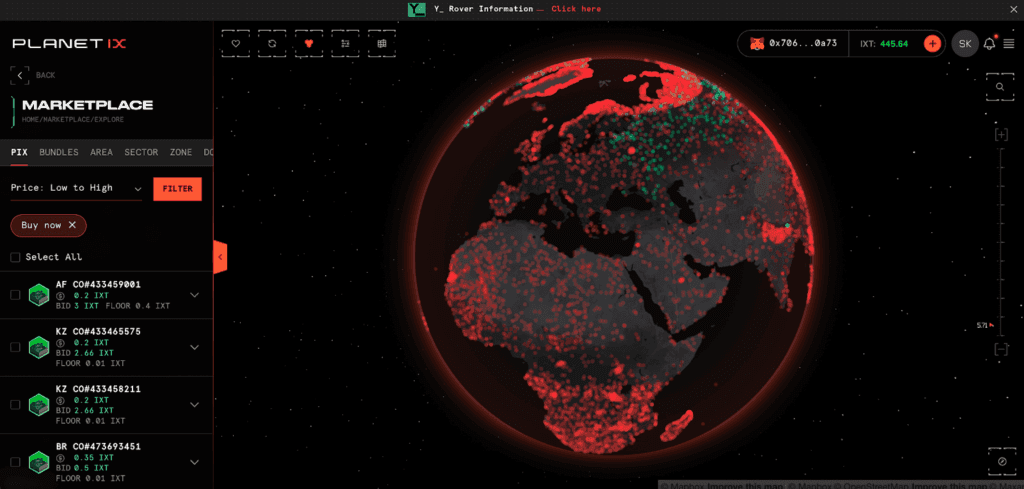The gaming landscape is undergoing significant transformation with the adoption of blockchain-based tokenization. This process is altering ownership dynamics, providing players with increased control over their virtual possessions. Traditionally, web2 gaming studios held ownership over in-game items, avatars, and currencies. However, a significant change is underway, granting players authority over their virtual belongings.
This shift is giving rise to dynamic player-driven economies, where the gaming community plays a pivotal role in shaping the rules. In this article, we explore the integration of tokenization in gaming, shedding light on NFTs, dynamic assets, and the consequential rise of player-driven economies.

Tokenizing In-Game Assets
What is Tokenization?
"The tokenization of game assets refers to the process of creating blockchain-based certificates of ownership for in-game items, avatars, and currencies." The concept of tokenizing game assets involves the creation of blockchain-based certificates of ownership for in-game items, avatars, and currencies. This transformative process is shifting control from gaming studios to players, resulting in the emergence of dynamic player-driven game economies.
"Tokens are effectively digital certificates stored on a blockchain that represent ownership of an asset." The connection between blockchains and tokenization lies in the utilization of tokens, which are essentially digital certificates stored on a blockchain to signify ownership of a particular asset. By storing these tokens on decentralized, permissionless networks, they become resistant to censorship, user-controlled, accessible to all, and interoperable across the web3 ecosystem.
Smart contracts further enhance blockchain-based tokens by allowing them to follow predetermined logic, effectively linking value with programmability. Tokenization, initially a force in financial markets and online communities with NFTs, is now making its mark on web2 gaming.

Tokenizing In-Game Assets
Types of Game Tokens?
Non-Fungible, Dynamic, and Fungible Tokens
In the realm of in-game assets, tokenization comes in various forms including non-fungible tokens (NFTs), dynamic NFTs (dNFTs), and fungible tokens (FTs).
(1) Non-Fungible Tokens (NFTs)
Below are examples of non-fungible tokens (NFTs) serving as in-game assets for avatars, items, land, and skins.
Avatars: NFT avatars serve as game characters in many web3 games, providing players with a consistent identity across multiple games. For example, the web3 game Illuvium features NFT avatars known as “Illuvitars.”

Tokenizing In-Game Assets
Items: NFTs represent a diverse array of in-game items, including weapons, armor, tools, trophies, and energy packs. Players can trade these items in NFT marketplaces to progress faster in the game. For example, the web3 game Planet IX enables players to purchase and trade Energy, Astro Credit, BioM0d, Blueprints, and other NFT assets.

Tokenizing In-Game Assets
Land: Virtual land within a game's metaverse can be bought, sold, and developed, mirroring real-world supply and demand dynamics. Another example from the web3 game Planet IX where players can buy land NFTs.

Tokenizing In-Game Assets
Skins: These alter the appearance of avatars for aesthetic purposes, and NFT skins' limited availability increases their rarity. A good example is the Wild West-themed web3 game Grit on the Epic Games Store and the Gala Games Platform. Supposedly, over 200 million players will be able to purchase skins as NFTs to use in the game.

Tokenizing In-Game Assets
(2) Dynamic Non-Fungible Tokens (dNFTs)
Below are examples of dynamic NFTs (dNFTs) serving as in-game assets for evolving avatars and upgradable items.
Evolving Avatars: Dynamic NFT avatars evolve as players progress through a game, starting as basic characters and transforming into more advanced forms.

Tokenizing In-Game Assets
Upgradable Items: Similar to avatars, dNFTs are used for upgradable in-game items, offering a dynamic gaming experience.

Tokenizing In-Game Assets
(3) Fungible Tokens (FTs)
Below are examples of fungible tokens (FTs) serving as in-game assets for currency and real-world money.
In-Game Currencies: Fungible tokens facilitate seamless trading of in-game NFT items and rare dNFT avatars. For example, the GameFi project Aavegotchi has rewarded players with over 1.5 million $GHST tokens to date.

Tokenizing In-Game Assets
Real-World Money: Rare in-game assets can gain significant real-world value, allowing players to trade in-game currency for NFTs or actual currency.

Tokenizing In-Game Assets
Advantages of Tokenizing In-Game Assets
Tokenization introduces numerous opportunities for web3 gaming projects, including by not limited to asset ownership, open markets, gaming incentives, cross-platform compatibility, player-driven economies, and enhanced security. We break these down below, providing simple examples.

Tokenizing In-Game Assets
Digital Asset Ownership: NFTs grant players complete control over their in-game assets, stored securely in a web3 wallet.
Open Markets: Asset ownership empowers players to trade items, currencies, and avatars across open marketplaces, freeing them from the control of game publishers.
Gaming Incentives: Real-world value incentives enhance the gaming experience, fostering early-stage adoption and recognizing loyal users through play-to-earn gaming.
Cross-Platform Compatibility: Tokenized assets can seamlessly move across different gaming platforms and ecosystems.
Player-Driven Economies: The gaming economy becomes accessible to all, with developers, creators, and players contributing to projects or starting their own.
Enhanced Security: Cutting-edge web3 infrastructure provides trust minimization, cryptographic guarantees, and transparency, ensuring the protection of player assets even in the face of malicious actors.

Tokenizing In-Game Assets
Final Thoughts
The tokenization of in-game assets marks a notable moment in gaming history. As players navigate this new era of ownership and trade, the gaming industry is witnessing the emergence of an era where power lies not just in developers' hands but in the dynamic gaming community. The future promises a landscape where virtual economies thrive, driven by player creativity, contributions, and aspirations across the web3 gaming universe. This article was inspired by an original blog post from Chainlink, you can read the full post on their website here for more information.



